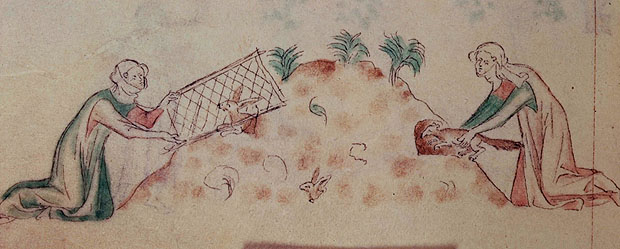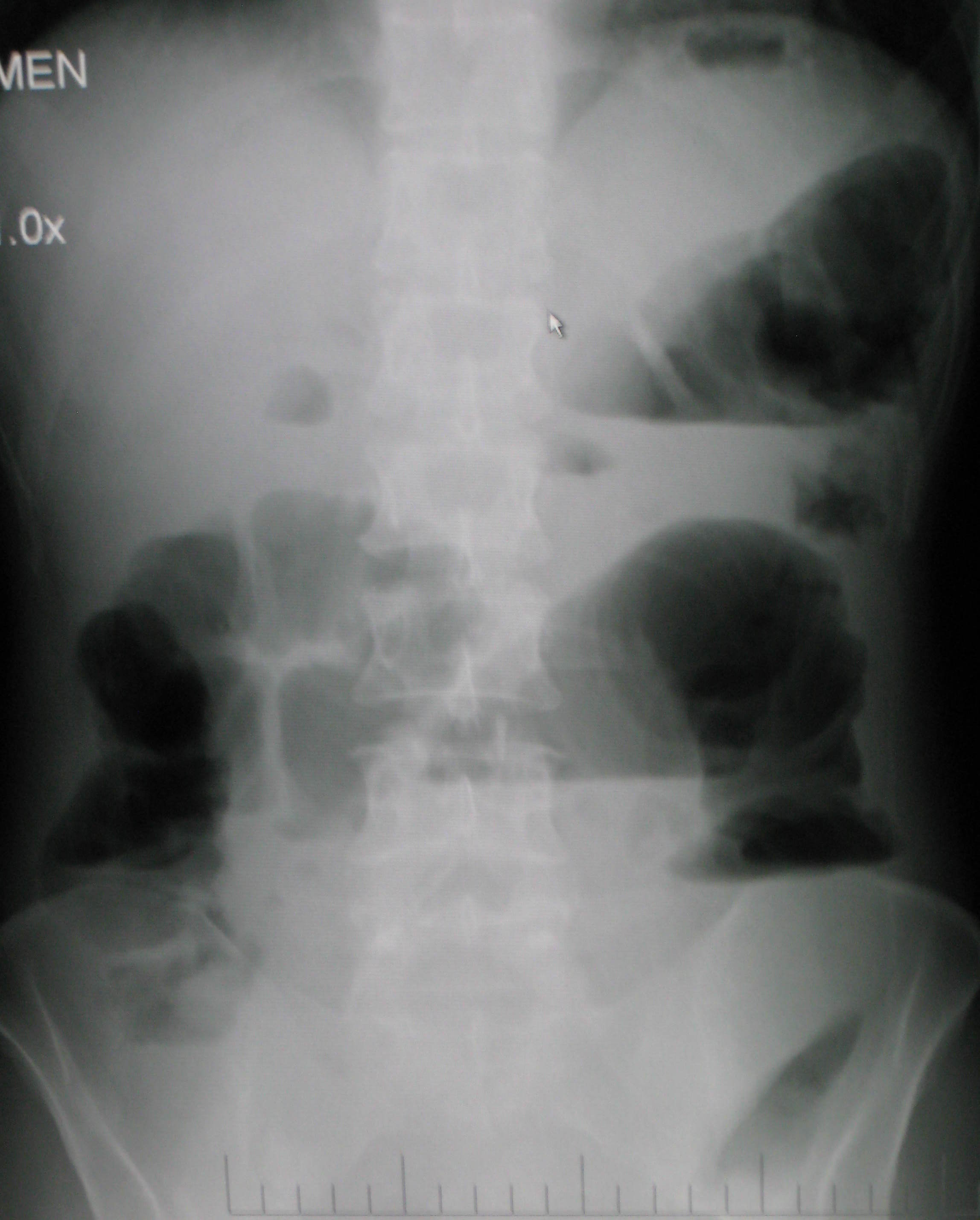|
Vienna Rabbit
The Vienna rabbit is a breed of domesticated rabbit originating in Austria. Whilst it is recognised by the British Rabbit Council as a "Normal Fur" breed, it is unrecognised by the American Rabbit Breeders Association. Origin The Vienna rabbit was originally bred by Wilheim Mucke in the late 1800s, who spent 15 years attempting to breed a rabbit with blue eyes. It has since become one of the most popular breeds in Europe. Appearance The Vienna rabbit can come in two varieties: a uniform white, or coloured. The coloured variety can be a dark slate blue, black or Agouti (a chestnut brown). It has ears approximately in length. Diet Like most other rabbits, this breed should be fed a mainly fibre-rich diet, consisting mainly of vegetables and timothy hay. Health The Vienna rabbit can suffer from overgrown teeth, ear mites and hairballs. It can be susceptible to digestive issues such as GI stasis which may cause intestinal blockage Bowel obstruction, also known ... [...More Info...] [...Related Items...] OR: [Wikipedia] [Google] [Baidu] |
Domesticated Rabbit
A domestic or domesticated rabbit (''Oryctolagus cuniculus domesticus'')—more commonly known as a pet rabbit, bunny, bun, or bunny rabbit—is a subspecies of European rabbit, a member of the lagomorph family. A male rabbit is known as a ''buck,'' a female is a ''doe,'' and a young rabbit is a ''kit'', or ''kitten''. Rabbits were first used for their Rabbit#As food and clothing, food and fur by Ancient Rome, the Romans, and have been kept as pets in Western nations since the 19th century. Rabbits can be housed in exercise Animal pen, pens, but free roaming without any boundaries in a rabbit-proofed space has become popularized on social media in recent years. Beginning in the 1980s, the idea of the domestic rabbit as a house companion, a so-called ''house rabbit'' similar to a house cat, was promoted. Rabbits can be litter box-trained and taught to Animal training, come when called, but they require exercise and can damage a house that has not been "rabbit proofed" based on th ... [...More Info...] [...Related Items...] OR: [Wikipedia] [Google] [Baidu] |
Rabbit Breeds
As of 2017, there were at least 305 breeds of domestic rabbit in 70 countries around the world. A rabbit breed is a distinct variety created through selective breeding (or occasionally natural selection) for specific characteristics, including size, fur (length, quality, or color), feed conversion ratio, climate adaptability, or temperament. Groups such as the American Rabbit Breeders Association (ARBA) and the British Rabbit Council (BRC) coordinate and standardize the desired qualities of their recognized breeds, through promotion and exhibition. Each rabbit breed is considered to benefit when a reputable breeder strives to emulate the purpose for the breed, often defined by the individual breed standard by which it may be judged. The global diversity of breeds reflects the breadth of the rabbit's unique qualities. Listed below are 191 of the world's modern-day rabbit breeds. Modern-day rabbit breeds * indicates "Rabbits in COUNTRY or TERRITORY" links. Scope The ... [...More Info...] [...Related Items...] OR: [Wikipedia] [Google] [Baidu] |
Leporidae
Leporidae is the family of rabbits and hares, containing over 60 species of extant mammals in all. The Latin word ''Leporidae'' means "those that resemble ''lepus''" (hare). Together with the pikas, the Leporidae constitute the mammalian order Lagomorpha. Leporidae differ from pikas in that they have short, furry tails and elongated ears and hind legs. The common name "rabbit" usually applies to all genera in the family except '' Lepus'', while members of ''Lepus'' (almost half the species) usually are called hares. Like most common names, however, the distinction does not match current taxonomy completely; jackrabbits are members of ''Lepus'', and members of the genera '' Pronolagus'' and '' Caprolagus'' sometimes are called hares. Various countries across all continents except Antarctica and Australia have indigenous species of Leporidae. Furthermore, rabbits, most significantly the European rabbit, ''Oryctolagus cuniculus'', also have been introduced to most of Oceani ... [...More Info...] [...Related Items...] OR: [Wikipedia] [Google] [Baidu] |
Mammals Of Europe
This is a list of European mammals. It includes all mammals currently found in Europe (from northeast Atlantic to Ural Mountains and northern slope of Caucasus Mountains), whether resident or as regular animal migration, migrants. Moreover, species occurring in Cyprus, Canary Islands (Spain) and Azores (Portugal) are listed here. If geographical range of given European mammal additionally overlaps Turkey, it is noted in some of cases. This checklist does not include species found only in captivity or List of extinct animals of Europe, extinct in Europe, except where there is some doubt about this. Each species is listed, with its binomial name and notes on its distribution where this is limited. Introduced species are also noted. Summary of 2006 IUCN Red List categories. Conservation status - IUCN Red List, IUCN Red List of Threatened Species: : - extinct, - extinct in the wild : - critically endangered, - endangered - vulnerable : - near threatened, - least concern : - data ... [...More Info...] [...Related Items...] OR: [Wikipedia] [Google] [Baidu] |
Housebreaking
Housebreaking (American English) or house-training (British English) is the process of training a domesticated animal that lives with its human Humans (''Homo sapiens'') are the most abundant and widespread species of primate, characterized by bipedalism and exceptional cognitive skills due to a large and complex brain. This has enabled the development of advanced tools, culture, ... owners in a house or other residence to excrete ( urinate and defecate) outdoors, or in a designated indoor area (such as an absorbent pad or a litter box), rather than to follow its instinctive behaviour randomly inside the house. Around 840 million cats and dogs alone are owned as pets around the globe; and in the United States, seventy percent of households own a pet. The process requires patience and consistence from the human. Accidents are a part of the process, and if the pet's owner reacts negatively, it could be discouraged, and the success of the training might be delayed. ... [...More Info...] [...Related Items...] OR: [Wikipedia] [Google] [Baidu] |
Intestinal Blockage
Bowel obstruction, also known as intestinal obstruction, is a mechanical or Ileus, functional obstruction of the Gastrointestinal tract#Lower gastrointestinal tract, intestines which prevents the normal movement of the products of digestion. Either the Small intestine, small bowel or Large intestine, large bowel may be affected. Signs and symptoms include abdominal pain, vomiting, abdominal bloating, bloating and not passing flatulence, gas. Mechanical obstruction is the cause of about 5 to 15% of cases of acute abdomen, severe abdominal pain of sudden onset requiring admission to hospital. Causes of bowel obstruction include Adhesion (medicine), adhesions, hernias, volvulus, endometriosis, inflammatory bowel disease, appendicitis, Neoplasm, tumors, diverticulitis, ischemic colitis, ischemic bowel, tuberculosis and intussusception (medical disorder), intussusception. Small bowel obstructions are most often due to adhesions and hernias while large bowel obstructions are most often ... [...More Info...] [...Related Items...] OR: [Wikipedia] [Google] [Baidu] |
Domestic Rabbit
A domestic or domesticated rabbit (''Oryctolagus cuniculus domesticus'')—more commonly known as a pet rabbit, bunny, bun, or bunny rabbit—is a subspecies of European rabbit, a member of the lagomorph family. A male rabbit is known as a ''buck,'' a female is a ''doe,'' and a young rabbit is a ''kit'', or ''kitten''. Rabbits were first used for their food and fur by the Romans, and have been kept as pets in Western nations since the 19th century. Rabbits can be housed in exercise pens, but free roaming without any boundaries in a rabbit-proofed space has become popularized on social media in recent years. Beginning in the 1980s, the idea of the domestic rabbit as a house companion, a so-called ''house rabbit'' similar to a house cat, was promoted. Rabbits can be litter box-trained and taught to come when called, but they require exercise and can damage a house that has not been "rabbit proofed" based on their innate need to chew. Accidental interactions between pet rab ... [...More Info...] [...Related Items...] OR: [Wikipedia] [Google] [Baidu] |
Austria
Austria, , bar, Östareich officially the Republic of Austria, is a country in the southern part of Central Europe, lying in the Eastern Alps. It is a federation of nine states, one of which is the capital, Vienna, the most populous city and state. A landlocked country, Austria is bordered by Germany to the northwest, the Czech Republic to the north, Slovakia to the northeast, Hungary to the east, Slovenia and Italy to the south, and Switzerland and Liechtenstein to the west. The country occupies an area of and has a population of 9 million. Austria emerged from the remnants of the Eastern and Hungarian March at the end of the first millennium. Originally a margraviate of Bavaria, it developed into a duchy of the Holy Roman Empire in 1156 and was later made an archduchy in 1453. In the 16th century, Vienna began serving as the empire's administrative capital and Austria thus became the heartland of the Habsburg monarchy. After the dissolution of th ... [...More Info...] [...Related Items...] OR: [Wikipedia] [Google] [Baidu] |
Timothy Hay
Timothy (''Phleum pratense'') is an abundant perennial grass native to most of Europe except for the Mediterranean region. It is also known as timothy-grass, meadow cat's-tail or common cat's tail. It is a member of the genus ''Phleum'', consisting of about 15 species of annual and perennial grasses. It is probably named after Timothy Hanson, an American farmer and agriculturalist said to have introduced it from New England to the southern states in the early 18th century. Upon his recommendation it became a major source of hay and cattle fodder to British farmers in the mid-18th century. Timothy can be confused with meadow foxtail (''Alopecurus pratensis'') or purple-stem cat's-tail (''Phleum phleoides''). Description Timothy grows to tall, with leaves up to long and broad. The leaves are hairless, rolled rather than folded, and the lower sheaths turn dark brown. It has no stolons or rhizomes, and no auricles. The flowerhead is long and broad, with densely packed ... [...More Info...] [...Related Items...] OR: [Wikipedia] [Google] [Baidu] |
Vegetables
Vegetables are parts of plants that are consumed by humans or other animals as food. The original meaning is still commonly used and is applied to plants collectively to refer to all edible plant matter, including the edible flower, flowers, fruits, edible plant stem, stems, leaf vegetable, leaves, list of root vegetables, roots, and list of edible seeds, seeds. An alternative definition of the term is applied somewhat arbitrarily, often by culinary and cultural tradition. It may exclude foods derived from some plants that are fruits, flowers, nut (fruit), nuts, and cereal grains, but include savoury fruits such as tomatoes and courgettes, flowers such as broccoli, and seeds such as Pulse (legume), pulses. Originally, vegetables were collected from the wild by hunter-gatherers and entered cultivation in several parts of the world, probably during the period 10,000 BC to 7,000 BC, when a new History of agriculture, agricultural way of life developed. At first, plants ... [...More Info...] [...Related Items...] OR: [Wikipedia] [Google] [Baidu] |






.jpg)
